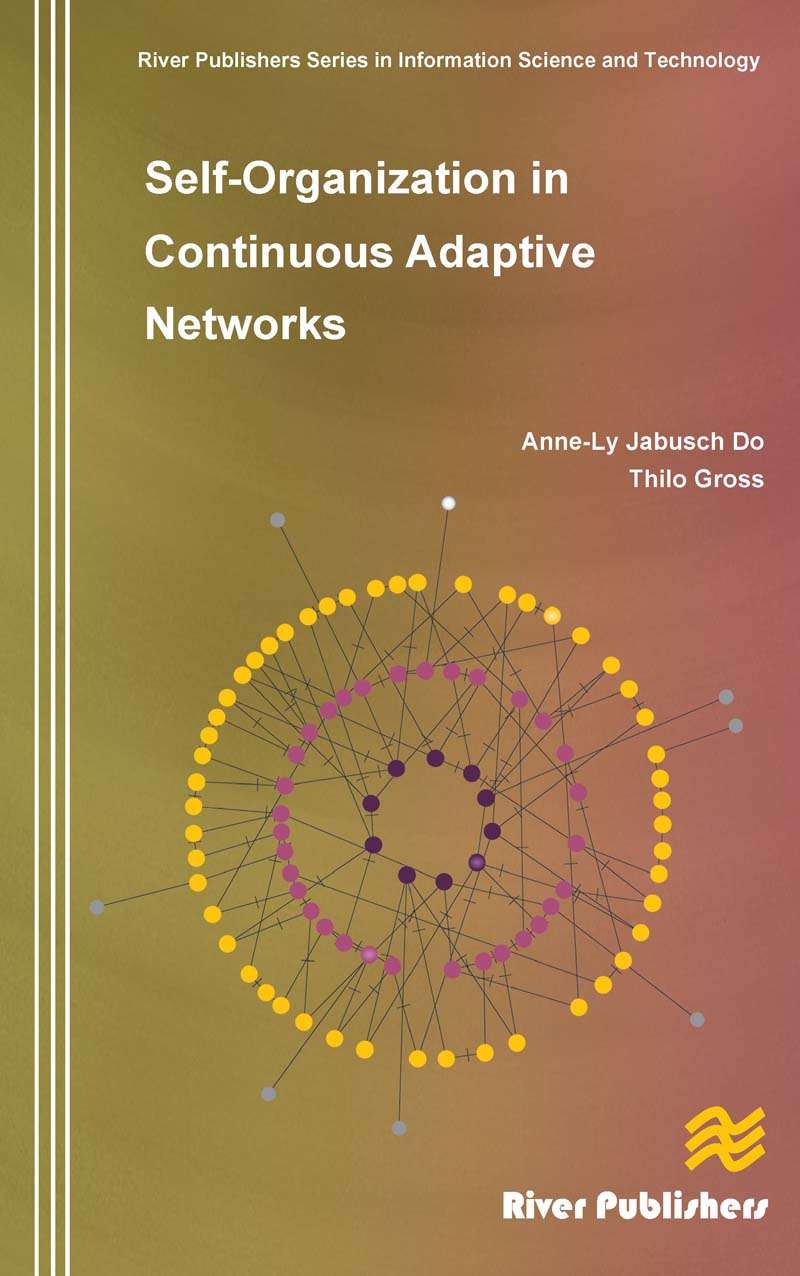River Publishers Series in Computing and Information Science and Technology
Self-Organization in Continuous Adaptive Networks
Author: Anne-Ly Do, Max Planck Institute for the Physics of Complex Systems, Germany and Thilo Gross, University of Bristol, UK
ISBN: 9788792329455
Available: September 2012
In the last years, adaptive networks have been discovered simultaneously in different fields as a universal framework for the study of self-organization phenomena. Understanding the mechanisms behind these phenomena is hoped to bring forward not only empirical disciplines such as biology, sociology, ecology, and economy, but also engineering disciplines seeking to employ controlled emergence in future technologies.
This volume presents new analytical approaches, which combine tools from dynamical systems theory and statistical physics with tools from graph theory to address the principles behind adaptive self-organization. It is the first class of approaches that is applicable to continuous networks.
The volume discusses the mechanisms behind three emergent phenomena that are prominently discussed in the context of biological and social sciences:
Self-organization in continuous adaptive networks is ideal for academic staff and master/research students in complexity and network sciences, in engineering, physics and maths.
Contents: Introduction; 1. Concepts and Tools; 2. Topological stability criteria for synchronized states; 3. Patterns of cooperation; 4. Self-organized criticality; 5. Conclusions and future research; Bibliography; Keyword Index; List of abbreviations.
This volume presents new analytical approaches, which combine tools from dynamical systems theory and statistical physics with tools from graph theory to address the principles behind adaptive self-organization. It is the first class of approaches that is applicable to continuous networks.
The volume discusses the mechanisms behind three emergent phenomena that are prominently discussed in the context of biological and social sciences:
- synchronization,
- spontaneous diversification, and
- self-organized criticality.
Self-organization in continuous adaptive networks is ideal for academic staff and master/research students in complexity and network sciences, in engineering, physics and maths.
Contents: Introduction; 1. Concepts and Tools; 2. Topological stability criteria for synchronized states; 3. Patterns of cooperation; 4. Self-organized criticality; 5. Conclusions and future research; Bibliography; Keyword Index; List of abbreviations.
adaptive networks, weighted networks, interplay of structure and dynamics,
synchronization, self-organized criticality, engineering complexity, structural and
functional self-organization
